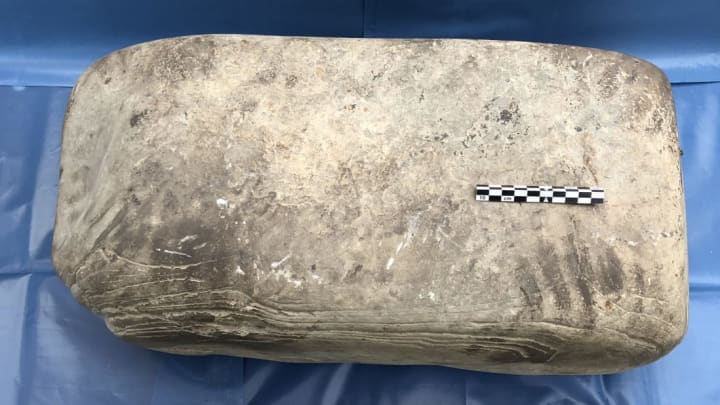Archaeologists working on the Scottish island of Rousay discovered two stone anvils that likely date back at least 1000 years—and one still bears handprints, likely made by the copper smith who used it, according to the BBC.
The discovery was the result of a dig by the Swandro-Orkney Coastal Archaeology Trust that has been ongoing since 2010. (The site, located near the Bay of Swandro, is known as the Knowe of Swandro, and Rousay is part of the Orkney Islands.)

At first, the researchers assumed the handprint belonged to one of them, left during the process of excavating the anvils from the remains of the partially underground workshop. However, they have since realized that the marks are hand and knee prints left by the smith. The knee marks are likely from the smith kneeling next to the anvil and brushing against it regularly.
@SwandroOrkney the Pictish Smithy is down to foundations of the hearth and the floor. What a great story we have as a metal workshop with high zinc in the crucibles indicating casting brass.#hessupported#scotarchstrat@AntiquityJ @northernpicts @DigItScotland @HistoryScotland pic.twitter.com/UzdRyZcU18
— Eroding Archaeology (@ErodingArchaeo1) July 20, 2018
The building has been identified as a Pictish structure dating to the 6th to 9th century CE. The Picts, a group of tribes that lived in Scotland in the late Iron Age (around the 3th century CE) into the Early Middle Ages, disappeared around 1100 CE. Excavation co-director Julie Bond told the BBC that she pegs the age of the prints between 1000 and 1500 years old.
The Swandro-Orkney Coastal Archaeology Trust is attempting to excavate and study the site before it falls prey to rising sea levels and coastal erosion on the island.
[h/t BBC]
